 For the most part, I can always be relied upon to enthusiastically support any talented artist who leaves their comfort zone behind to explore increasingly weird and uncharted territory. I do have my weaknesses, however, and one of the major ones is my undying love for classic Mille Plateaux/Chain Reaction-style dub techno. Consequently, I am hopelessly fixated on early Vladislav Delay albums like Entain and the newly reissued Multila. That is a damn shame, as Sasu Ripatti has made quite a lot of wonderful and forward-thinking music since and I have definitely not dug into his later work nearly as much as I should. This latest album, the first new Vladislav full-length in roughly five years, is a particularly effective and timely reminder that I am an absolute chump for sleeping on many of Ripatti's major statements over the years. Rakka is quite an ambitiously intense and inventive affair, seamlessly blurring together elements of Tim Hecker-style blown-out ambiance, power electronics, techno deconstruction, and production mastery into an explosive tour de force.
For the most part, I can always be relied upon to enthusiastically support any talented artist who leaves their comfort zone behind to explore increasingly weird and uncharted territory. I do have my weaknesses, however, and one of the major ones is my undying love for classic Mille Plateaux/Chain Reaction-style dub techno. Consequently, I am hopelessly fixated on early Vladislav Delay albums like Entain and the newly reissued Multila. That is a damn shame, as Sasu Ripatti has made quite a lot of wonderful and forward-thinking music since and I have definitely not dug into his later work nearly as much as I should. This latest album, the first new Vladislav full-length in roughly five years, is a particularly effective and timely reminder that I am an absolute chump for sleeping on many of Ripatti's major statements over the years. Rakka is quite an ambitiously intense and inventive affair, seamlessly blurring together elements of Tim Hecker-style blown-out ambiance, power electronics, techno deconstruction, and production mastery into an explosive tour de force.
Two new shows just for you. We have squeezed out two extended release episodes for this weekend to get you through this week. They contain mostly new songs but there's also new issues from the vaults. The first show features music from Rider/Horse, Mint Field, Robert Aiki Aubrey Lowe, Anastasia Coope, ISAN, Stone Music, La Securite, Bark Psychosis, Jon Rose, Master Wilburn Burchette, Umberto, Wand, Tim Koh, Sun An, and Memory Drawings. The second episode has music by Laibach, Melt-Banana, Chuck Johnson, X, K. Yoshimatsu, Dorothy Carter, Pavel Milyakov, Violence Gratuite, Mark Templeton, Dummy, Endon, body / negative, Midwife, Alberto Boccardi, Divine. Cow in Maui from Veronika in Vienna. Get involved: subscribe, review, rate, share with your friends, send images! |



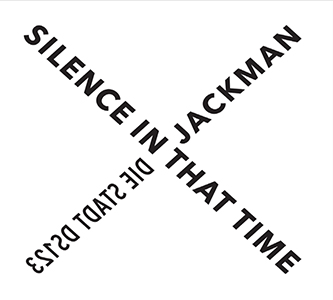 With a flurry of recent activity, including the Herbstsonne album also under his own name and Electric as Organum, David Jackman has been rather prolific in the past year. While I admittedly cannot say I know for sure what separates a David Jackman record from an Organum one (or why this one is credited to just his surname), Silence in that Time clearly shares some kinship with last year's Herbstsonne. Both feature his use of wide-open spaces, symmetrical song structures, and punctuations of massive piano chords, but the other details are where the difference lies.
With a flurry of recent activity, including the Herbstsonne album also under his own name and Electric as Organum, David Jackman has been rather prolific in the past year. While I admittedly cannot say I know for sure what separates a David Jackman record from an Organum one (or why this one is credited to just his surname), Silence in that Time clearly shares some kinship with last year's Herbstsonne. Both feature his use of wide-open spaces, symmetrical song structures, and punctuations of massive piano chords, but the other details are where the difference lies.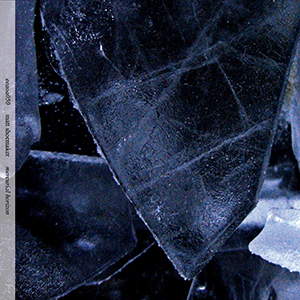 Before his untimely passing in 2017, Matt Shoemaker had a number of releases completed and ready to be released, including Mercurial Horizon. Recorded at various times between 2008 and 2012, during one of his most prolific phases, the album was completed five years ago, but just now being released. Split into two half hour pieces, it almost seems built for cassette, but thankfully presented as a gorgeous CD by the Elevator Bath label that does wonders to capture the depth and nuance of his work. Beautiful, unsettling, and bleak, it makes for an amazing disc that was worth the wait.
Before his untimely passing in 2017, Matt Shoemaker had a number of releases completed and ready to be released, including Mercurial Horizon. Recorded at various times between 2008 and 2012, during one of his most prolific phases, the album was completed five years ago, but just now being released. Split into two half hour pieces, it almost seems built for cassette, but thankfully presented as a gorgeous CD by the Elevator Bath label that does wonders to capture the depth and nuance of his work. Beautiful, unsettling, and bleak, it makes for an amazing disc that was worth the wait. The first foray into Warren Defever's teenage tape archive (last year's All The Mirrors in the House) was an absolute revelation that actively courted disbelief, but this second installment is a bit more modest in its scope. As a result, Return To Never unavoidably feels a bit underwhelming and insubstantial by comparison, but it is still a likable album that scratches roughly the same itch, as I am very much a fan of Defever's homespun, early lo-fi experiments. While there are still a healthy number of melodic guitar pieces strewn throughout the album, Return to Never is generally a more experimental and abstract affair than the previous volume. Phrases like "analogue murk" and "greyscale industrial drone" are tossed around in the album's description and they are fairly apt: if All The Mirrors captured a teenage Defever accidentally inventing shoegaze, Return to Never captures him accidentally mirroring the sounds of the early '80s noise underground (or at least calls to mind someone playing shoegaze-style guitar over such a tape). The warmer, more "ambient" passages still tend to be the best ones, but if some moments from Return to Never had found their way onto an early Broken Flag tape, I doubt anyone would have blinked or raised an eyebrow.
The first foray into Warren Defever's teenage tape archive (last year's All The Mirrors in the House) was an absolute revelation that actively courted disbelief, but this second installment is a bit more modest in its scope. As a result, Return To Never unavoidably feels a bit underwhelming and insubstantial by comparison, but it is still a likable album that scratches roughly the same itch, as I am very much a fan of Defever's homespun, early lo-fi experiments. While there are still a healthy number of melodic guitar pieces strewn throughout the album, Return to Never is generally a more experimental and abstract affair than the previous volume. Phrases like "analogue murk" and "greyscale industrial drone" are tossed around in the album's description and they are fairly apt: if All The Mirrors captured a teenage Defever accidentally inventing shoegaze, Return to Never captures him accidentally mirroring the sounds of the early '80s noise underground (or at least calls to mind someone playing shoegaze-style guitar over such a tape). The warmer, more "ambient" passages still tend to be the best ones, but if some moments from Return to Never had found their way onto an early Broken Flag tape, I doubt anyone would have blinked or raised an eyebrow.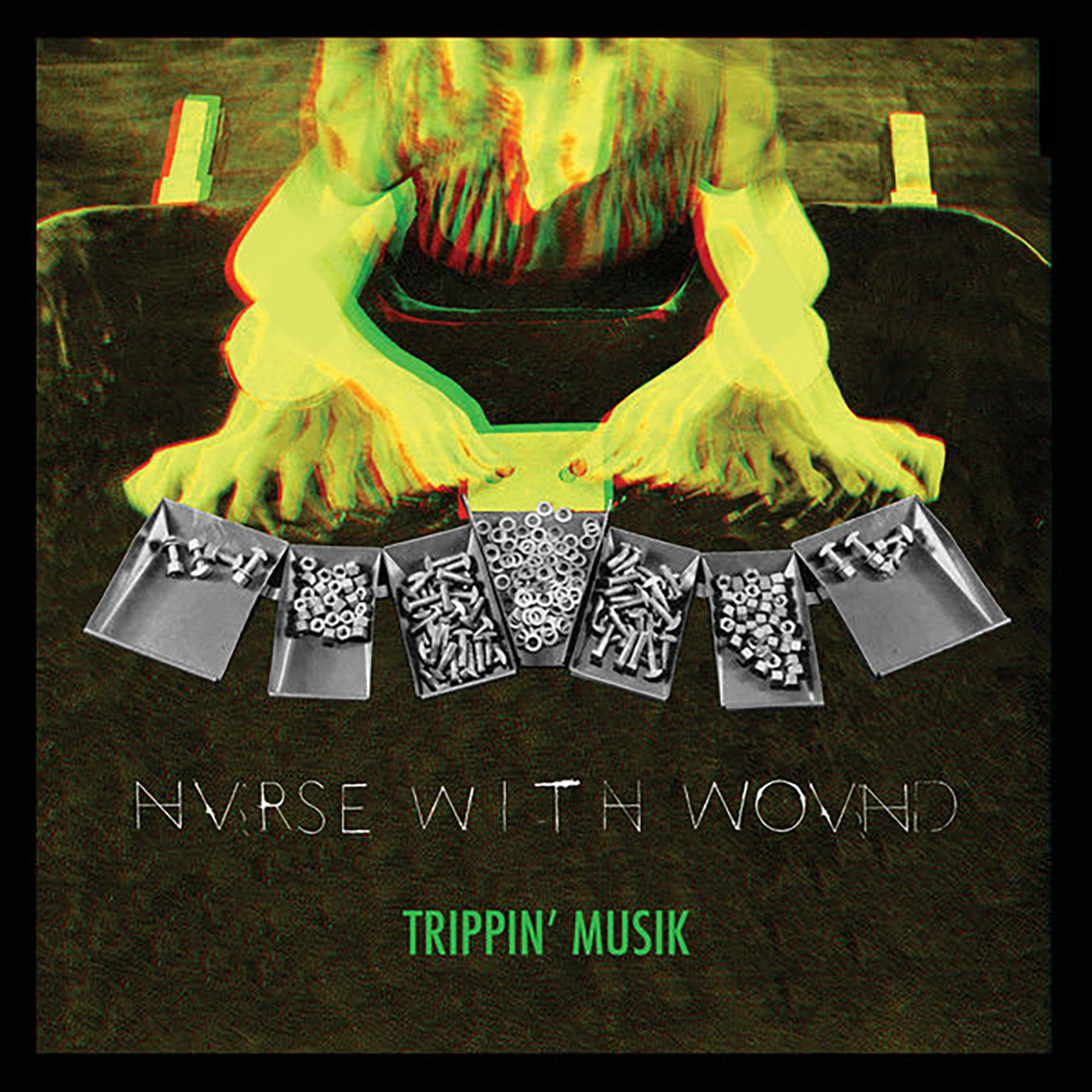 As a longtime NWW fan, the prospect of an ambitious, long-gestating triple LP release entitled Trippin’ Musik naturally filled me with glee and anticipation, as I envisioned another Soliloquy For Lilith-level classic. That enthusiasm remained undampened by the jabbering and splattering loop lunacy of Experimente II: Son of Trippin’ Music, as it seemed like that was intended as more of an outtake collection than a teasing glimpse of what was to come. As it turns out, however, it was very much the latter, as Trippin' Musik is often an obsessively loop-driven affair that basically expands upon Experimente II rather than transcending it. That is not necessarily a bad thing, but Trippin’ Musik is occasionally surprising in both its extremity and single-mindedness. This is a bizarre and challenging album even by Nurse With Wound standards.
As a longtime NWW fan, the prospect of an ambitious, long-gestating triple LP release entitled Trippin’ Musik naturally filled me with glee and anticipation, as I envisioned another Soliloquy For Lilith-level classic. That enthusiasm remained undampened by the jabbering and splattering loop lunacy of Experimente II: Son of Trippin’ Music, as it seemed like that was intended as more of an outtake collection than a teasing glimpse of what was to come. As it turns out, however, it was very much the latter, as Trippin' Musik is often an obsessively loop-driven affair that basically expands upon Experimente II rather than transcending it. That is not necessarily a bad thing, but Trippin’ Musik is occasionally surprising in both its extremity and single-mindedness. This is a bizarre and challenging album even by Nurse With Wound standards.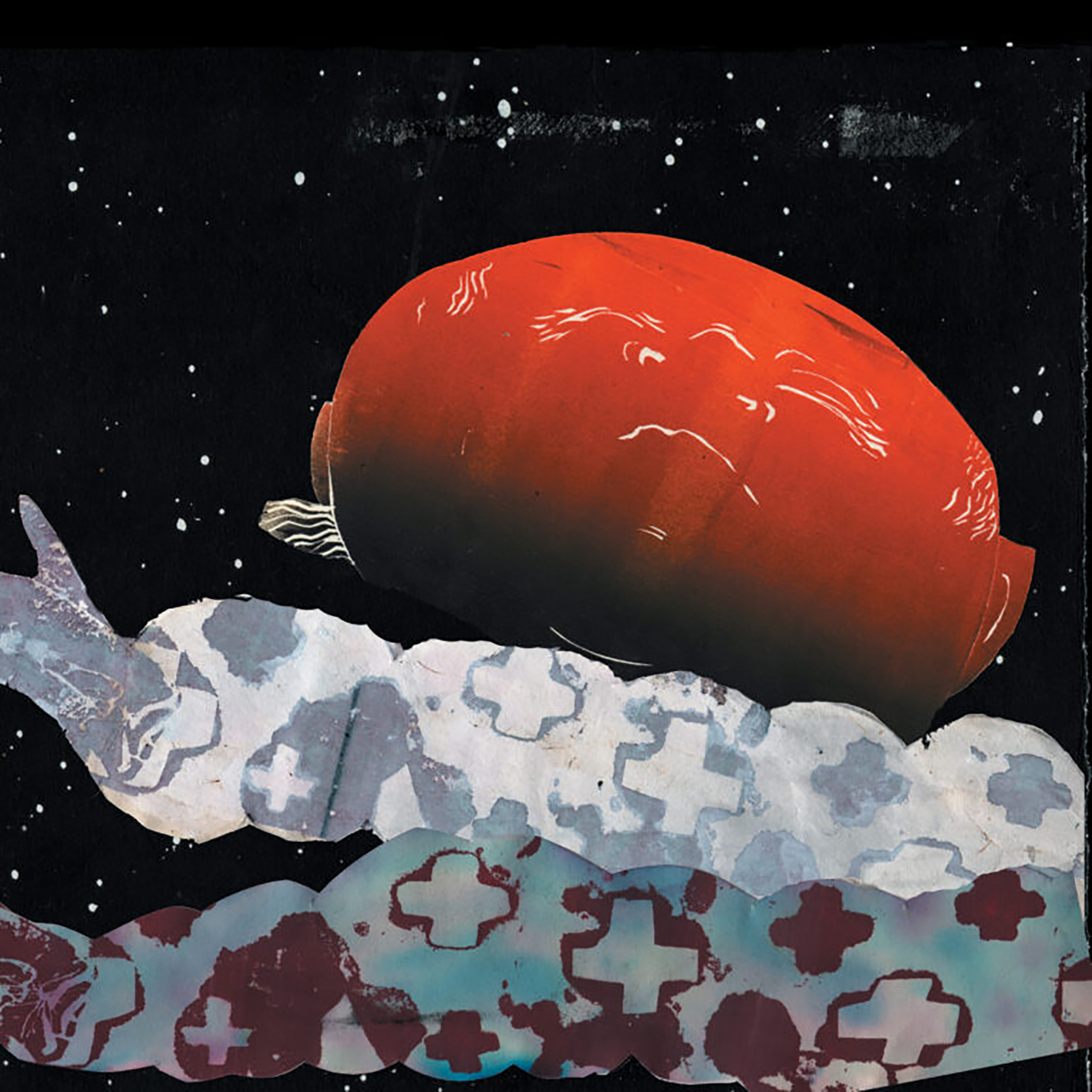 If someone had told me twenty years ago that Cerberus Shoal would someday evolve into a '60s girl group-style family band, I probably would have thought that I had fallen asleep and was having an extremely weird and perplexing dream. Nevertheless, that improbable future has now come to pass with Do You Wanna Have a Skeleton Dream?, which is Colleen Kinsella and Caleb Mulkerin's first album to feature their daughter Quinnisa as a full member of the band. As befits such an auspicious occasion, Skeleton Dream is an especially fun and ambitious anomaly within the already unpredictable Big Blood discography. While I am hesitant to describe any release by this long-running Portland, Maine project as a "party album," such a classification would not be terribly wide of the mark here, as this release is comprised almost entirety of hooky, retro-minded pop songs. Characteristically, however, Skeleton Dream's appeal runs quite a bit deeper than a mere collection of entertaining classic pop pastiches, occasionally catching me off-guard with some wonderfully haunting and darkly hallucinatory moments.
If someone had told me twenty years ago that Cerberus Shoal would someday evolve into a '60s girl group-style family band, I probably would have thought that I had fallen asleep and was having an extremely weird and perplexing dream. Nevertheless, that improbable future has now come to pass with Do You Wanna Have a Skeleton Dream?, which is Colleen Kinsella and Caleb Mulkerin's first album to feature their daughter Quinnisa as a full member of the band. As befits such an auspicious occasion, Skeleton Dream is an especially fun and ambitious anomaly within the already unpredictable Big Blood discography. While I am hesitant to describe any release by this long-running Portland, Maine project as a "party album," such a classification would not be terribly wide of the mark here, as this release is comprised almost entirety of hooky, retro-minded pop songs. Characteristically, however, Skeleton Dream's appeal runs quite a bit deeper than a mere collection of entertaining classic pop pastiches, occasionally catching me off-guard with some wonderfully haunting and darkly hallucinatory moments. I cannot say that I love every one of Jan St. Werner's bizarre solo albums, but his unwavering passion for pure experimentation and escalating unfamiliarity is certainly admirable and endearing. On this latest release, however, he takes a break from his extremely outré Fiepblatter Catalogue project to celebrate the incomparable ramblings of his former Von Südenfed bandmate: the late Mark E. Smith. The heart of the album is an edit of a "bespoke light and sound environment" that first premiered in Manchester back in 2014, while the remainder is (for the most part) fleshed out with some orphaned, Smith-centric work that was composed for other reasons. Unsurprisingly, it is Smith's near-constant presence as a cranky, surrealist raconteur that provides most of Molocular Meditation's charm, but St. Werner's noisy, blurting and scattershot electronics do a effective job of creating a disorienting "sci-fi dystopia" backdrop for those musings. At its best, Molocular Meditation feels like Smith's voice erupting through the noisy squall of a bank of malfunctioning computers, but the album has a whole is a prickly, challenging, and elusive affair (which, I suppose, is exactly what I expect from St. Werner at this stage in his career).
I cannot say that I love every one of Jan St. Werner's bizarre solo albums, but his unwavering passion for pure experimentation and escalating unfamiliarity is certainly admirable and endearing. On this latest release, however, he takes a break from his extremely outré Fiepblatter Catalogue project to celebrate the incomparable ramblings of his former Von Südenfed bandmate: the late Mark E. Smith. The heart of the album is an edit of a "bespoke light and sound environment" that first premiered in Manchester back in 2014, while the remainder is (for the most part) fleshed out with some orphaned, Smith-centric work that was composed for other reasons. Unsurprisingly, it is Smith's near-constant presence as a cranky, surrealist raconteur that provides most of Molocular Meditation's charm, but St. Werner's noisy, blurting and scattershot electronics do a effective job of creating a disorienting "sci-fi dystopia" backdrop for those musings. At its best, Molocular Meditation feels like Smith's voice erupting through the noisy squall of a bank of malfunctioning computers, but the album has a whole is a prickly, challenging, and elusive affair (which, I suppose, is exactly what I expect from St. Werner at this stage in his career).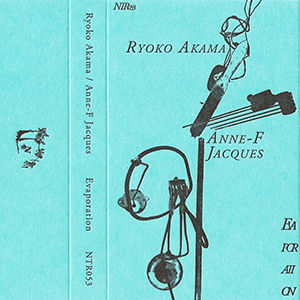 Both Ryoko Akama and Anne-F Jacques have large discographies focusing on the creation of music with improvised and constructed devices based on everyday objects, so working together makes perfect sense. The two live collaborations Evaporation is comprised of feature the duo blending the methodologies of live performance and art installation, with the self-guiding objects manipulated in real time as the two move about the performance space while adjusting the objects and mixing the sound. The resulting recordings are two unique, yet complementary long-form works that, while difficult at times, are captivating throughout.
Both Ryoko Akama and Anne-F Jacques have large discographies focusing on the creation of music with improvised and constructed devices based on everyday objects, so working together makes perfect sense. The two live collaborations Evaporation is comprised of feature the duo blending the methodologies of live performance and art installation, with the self-guiding objects manipulated in real time as the two move about the performance space while adjusting the objects and mixing the sound. The resulting recordings are two unique, yet complementary long-form works that, while difficult at times, are captivating throughout.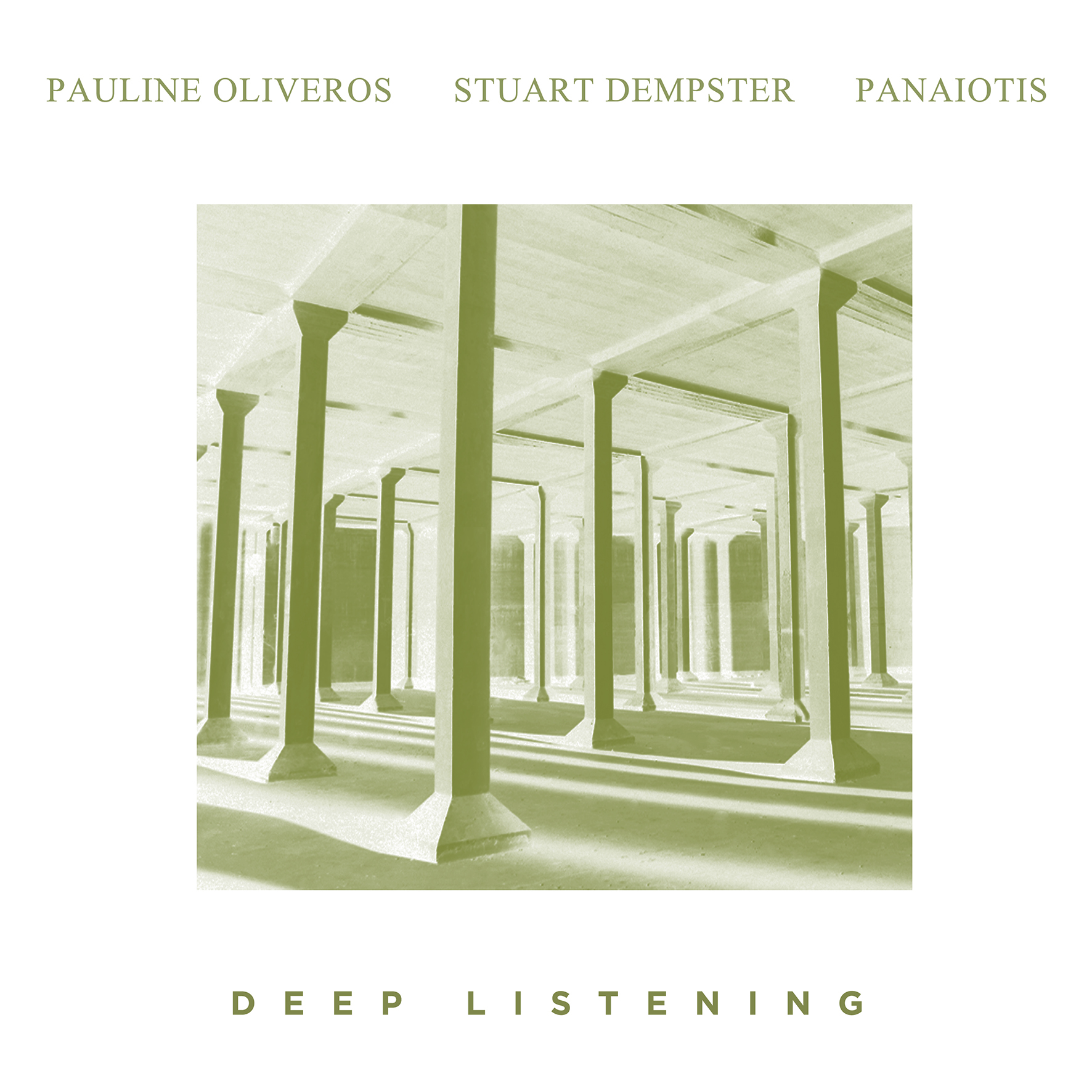 Originally released back in 1989 on the New Albion label, this landmark celebration of extreme natural reverb has finally received a long-deserved reissue in honor of its thirtieth anniversary. Obviously, production technology has evolved quite a lot since the '80s and site-specific performances have since become a somewhat common occurrence in the experimental music world, so Deep Listening does not feel quite as radical now as it did when it was first released. Nevertheless, it is still quite a strange and magical album, as I cannot think of any other accordionists who have descended into a two million gallon cistern to explore the incredible acoustic possibilities inherent in a 45-second reverb decay. As someone without a deep technical understanding of how reverb works, I found the new liner notes from recording engineer Al Swanson and Peter Ward quite helpful in explaining exactly why these recordings feel so unreal, but such knowledge is not necessary to appreciate this album: I have been able to enjoy the epic and eerie slow-motion beauty of Deep Listening for years without knowing a single goddamn thing about phase integrity or slap-back. While I cannot say I was exactly clamoring to see this album released in the vinyl format, I am absolutely delighted to see it resurrected and back in the public consciousness.
Originally released back in 1989 on the New Albion label, this landmark celebration of extreme natural reverb has finally received a long-deserved reissue in honor of its thirtieth anniversary. Obviously, production technology has evolved quite a lot since the '80s and site-specific performances have since become a somewhat common occurrence in the experimental music world, so Deep Listening does not feel quite as radical now as it did when it was first released. Nevertheless, it is still quite a strange and magical album, as I cannot think of any other accordionists who have descended into a two million gallon cistern to explore the incredible acoustic possibilities inherent in a 45-second reverb decay. As someone without a deep technical understanding of how reverb works, I found the new liner notes from recording engineer Al Swanson and Peter Ward quite helpful in explaining exactly why these recordings feel so unreal, but such knowledge is not necessary to appreciate this album: I have been able to enjoy the epic and eerie slow-motion beauty of Deep Listening for years without knowing a single goddamn thing about phase integrity or slap-back. While I cannot say I was exactly clamoring to see this album released in the vinyl format, I am absolutely delighted to see it resurrected and back in the public consciousness. I am hardly unique in this regard, but Markus Popp's classic run of mid-'90s albums made a huge impression on me, acting as a Rosetta Stone that led me to a world of radical (and also not-so-radical) electronic music far more compelling than the punk and industrial music that I was into at the time. Sadly, I cannot say that I have been a particularly loyal fan over the ensuing two decades, so I did not stick with Popp through his various bold attempts to reinvent his aesthetic. However, his work has never stopped interesting me–it is just that the allure of his earlier work was its perfect balance of bold concept and skilled execution. And, of course, an artist only gets to make a mind-blowing first impression once. As a result, later Oval albums simply did not leave a deep impression on me anything like that left by 94 Diskont. That said, there is definitely something to be said for masterful execution on its own and Scis fitfully captures Popp at the absolute height of his powers in that regard (particularly on the second half of the album). While my nostalgia—and expectation—clouded vision makes it impossible to rank this album within Oval's discography with any degree of objectivity, I feel quite confident in stating that some of the individual songs on Scis easily stand among the finest of Popp's long career (especially "Mikk").
I am hardly unique in this regard, but Markus Popp's classic run of mid-'90s albums made a huge impression on me, acting as a Rosetta Stone that led me to a world of radical (and also not-so-radical) electronic music far more compelling than the punk and industrial music that I was into at the time. Sadly, I cannot say that I have been a particularly loyal fan over the ensuing two decades, so I did not stick with Popp through his various bold attempts to reinvent his aesthetic. However, his work has never stopped interesting me–it is just that the allure of his earlier work was its perfect balance of bold concept and skilled execution. And, of course, an artist only gets to make a mind-blowing first impression once. As a result, later Oval albums simply did not leave a deep impression on me anything like that left by 94 Diskont. That said, there is definitely something to be said for masterful execution on its own and Scis fitfully captures Popp at the absolute height of his powers in that regard (particularly on the second half of the album). While my nostalgia—and expectation—clouded vision makes it impossible to rank this album within Oval's discography with any degree of objectivity, I feel quite confident in stating that some of the individual songs on Scis easily stand among the finest of Popp's long career (especially "Mikk").
